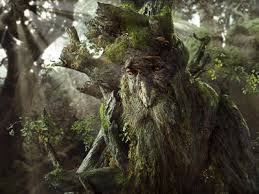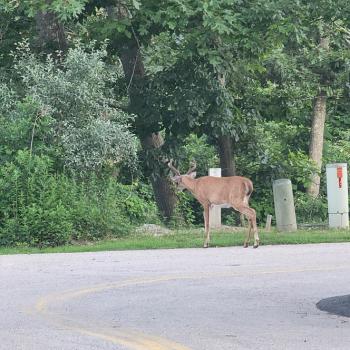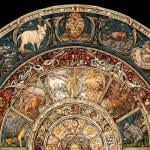He shall be like a tree planted by the rivers of water (Psa 1:3)
Those who have been following this blog for it’s almost four years of existence know that I have an attraction to online personality tests that borders on the obsessive. I’ve learned many interesting things about myself from these tests, including that among the pantheon of Shakespeare’s immortal characters I am most like Lady Macbeth, my aura is yellow, and I would be Bach as a classical composer, Mr. Carson as a Downton Abbey character, and a Guinness if I were a beer.
If I Were a Beer, or What I have learned about myself from Facebook
I haven’t taken one of these in a while—fewer of them seem to come across my Facebook feed these days than in the past—so I was pleased when a Dr. Seuss quiz came along the other day. I was even more pleased with the result.
Which Dr. Seuss character are you?
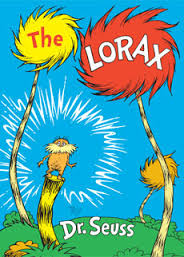 You are The Lorax. You are wise and intelligent. You have strong beliefs but are also able to see both sides of every issue and you understand that not everything is black and white. You are contemplative, kind, and reflective. You never rush into something but first consider it thoughtfully from every angle.
You are The Lorax. You are wise and intelligent. You have strong beliefs but are also able to see both sides of every issue and you understand that not everything is black and white. You are contemplative, kind, and reflective. You never rush into something but first consider it thoughtfully from every angle.
I know, these quizzes are intended to tell the quiz taker nothing but what she or he wants to hear (except my Lady Macbeth result), but I don’t care. I’m happy if any of this description fits me even ten percent of the time. But most importantly, I am happy to be the 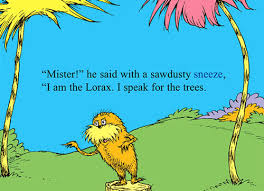 Lorax because according to the text of Dr. Seuss’ classic tale, the Lorax “speaks for the trees.”
Lorax because according to the text of Dr. Seuss’ classic tale, the Lorax “speaks for the trees.”
The Lorax was Dr. Seuss’ favorite of his multitude of books; he reportedly said that the book “came out of me being angry. In The Lorax I was out to attack what I think are evil things and let the chips fall where they might.” The evil things Dr. Seuss was angry about included corporate greed and the threat of such greed to nature and the environment. The Lorax is full of the outrageous characters one expects from Dr. Seuss.  The Once-Ler tells the story of how he made a fortune crafting an impossibly useful garment, the Thneed, out of the wooly foliage of the Truffula tree—a type of tree that no longer exists. The day the Once-Ler cuts down his first Truffula tree, a creature called the Lorax, who “speaks for the trees” because they have no tongues, emerges from the tree stump and criticizes the Once-Ler for having sacrificed a tree for such a mercenary purpose.
The Once-Ler tells the story of how he made a fortune crafting an impossibly useful garment, the Thneed, out of the wooly foliage of the Truffula tree—a type of tree that no longer exists. The day the Once-Ler cuts down his first Truffula tree, a creature called the Lorax, who “speaks for the trees” because they have no tongues, emerges from the tree stump and criticizes the Once-Ler for having sacrificed a tree for such a mercenary purpose.  But the Once-Ler soon finds that there is great consumer demand for Thneeds, a large factory is built, and he becomes fabulously rich. But animals who live in the Truffula forest and eat its nourishing fruit have to leave, and eventually the last Truffula tree is cut down. The Lorax says nothing but with one sad backward glance lifts himself into the air and disappears behind the smoggy clouds. Where he last stood is a small monument engraved with a single word: “UNLESS.”
But the Once-Ler soon finds that there is great consumer demand for Thneeds, a large factory is built, and he becomes fabulously rich. But animals who live in the Truffula forest and eat its nourishing fruit have to leave, and eventually the last Truffula tree is cut down. The Lorax says nothing but with one sad backward glance lifts himself into the air and disappears behind the smoggy clouds. Where he last stood is a small monument engraved with a single word: “UNLESS.”
I like trees. Of the dozens of creatures in Tolkien’s The Lord of the Rings, the Ents are my favorites. Trees adopt the general plant survival strategy of choosing a location that will provide sufficient food, water, and sunlight, then hunkering down in a permanent installation designed to stand up to all dangers for as long as possible—a very different plan from the animal strategy of being nimble, mobile, and capable of running away from danger.  A massive red oak outside the front door of my Minnesota sabbatical apartment several years ago became an iconic symbol of internal changes that I was experiencing; the introduction to my book that will be published early next year is focused on that oak, as was a blog post from a few years ago.
A massive red oak outside the front door of my Minnesota sabbatical apartment several years ago became an iconic symbol of internal changes that I was experiencing; the introduction to my book that will be published early next year is focused on that oak, as was a blog post from a few years ago.
So it is not surprising that I had a strongly negative reaction to the news earlier this summer from the administration that a beautiful old red oak on the lower part of my college’s campus—as large and spectacular as my Minnesota oak—had been marked as diseased during the annual evaluation of the hundreds of trees on campus and, sadly, would have to come down.
The oak in question is one of two massive oaks located directly in front of the building in which my philosophy department office was located for my first dozen or so years at the college. They stand at the top of a grassy and gradually sloping quad (that was a huge parking lot when I came to the college in the middle nineties)—our impressive performing arts building is at the other end of the quad. Shortly after I arrived on campus, several colleagues told me a story about these oaks.  The story may be apocryphal, but it illustrates just how attached people on campus are to these two trees. Several decades ago one or both of the trees was scheduled for removal in order to make room for a parking lot. Faculty, staff, administrators, and students formed a human chain around the threatened trees and successfully forced the decision makers to change their minds about the future of the oaks and design the parking lot around them.
The story may be apocryphal, but it illustrates just how attached people on campus are to these two trees. Several decades ago one or both of the trees was scheduled for removal in order to make room for a parking lot. Faculty, staff, administrators, and students formed a human chain around the threatened trees and successfully forced the decision makers to change their minds about the future of the oaks and design the parking lot around them.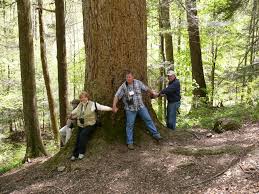 If true, I’ll bet it happened in the sixties—people did that sort of thing back then. The trees, which have been estimated to be 150-200 years old, would have been roughly the same size then as they are now.
If true, I’ll bet it happened in the sixties—people did that sort of thing back then. The trees, which have been estimated to be 150-200 years old, would have been roughly the same size then as they are now.
Not surprisingly, the email announcing that one of the trees was coming down set off a collective WHAT THE FUCK??? reaction across campus. Facebook and Twitter lit up like Christmas trees. Why was this happening in the summer when the campus is relatively empty? What is the real reason this tree is coming down? What are the authorities trying to pull/? Shouldn’t the whole college community be involved in the decision? Push back from various persons (led by a colleague from political science who is our faculty Lorax) and a welcome willingness from the administration to delay the tree’s removal while second and third opinions were sought and discussion was opened up has preserved the tree to date—but what will eventually happen remains to be seen. 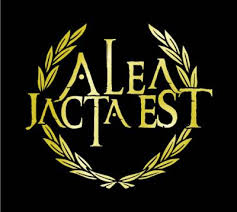 Two arborist firms hired by the college recommend the tree’s removal, while the city forester thinks the tree can be saved but won’t insist on it, leaving the choice in the hands of the administrators responsible for making such decisions. An open forum was held earlier this week to allow various constituencies to chime in, but it is clear that, as Julius Caesar said, the die has been cast. Before long there will be a gaping hole where this glorious tree has stood for more than a century. And current efforts to save it will become campus lore.
Two arborist firms hired by the college recommend the tree’s removal, while the city forester thinks the tree can be saved but won’t insist on it, leaving the choice in the hands of the administrators responsible for making such decisions. An open forum was held earlier this week to allow various constituencies to chime in, but it is clear that, as Julius Caesar said, the die has been cast. Before long there will be a gaping hole where this glorious tree has stood for more than a century. And current efforts to save it will become campus lore.
I am very concerned about the preservation of our environment, but in truth my love of trees is more personal than general. We have two trees in our front yard—Blue and Chuck—who have been part of our family for most of the two decades we have lived in our house.
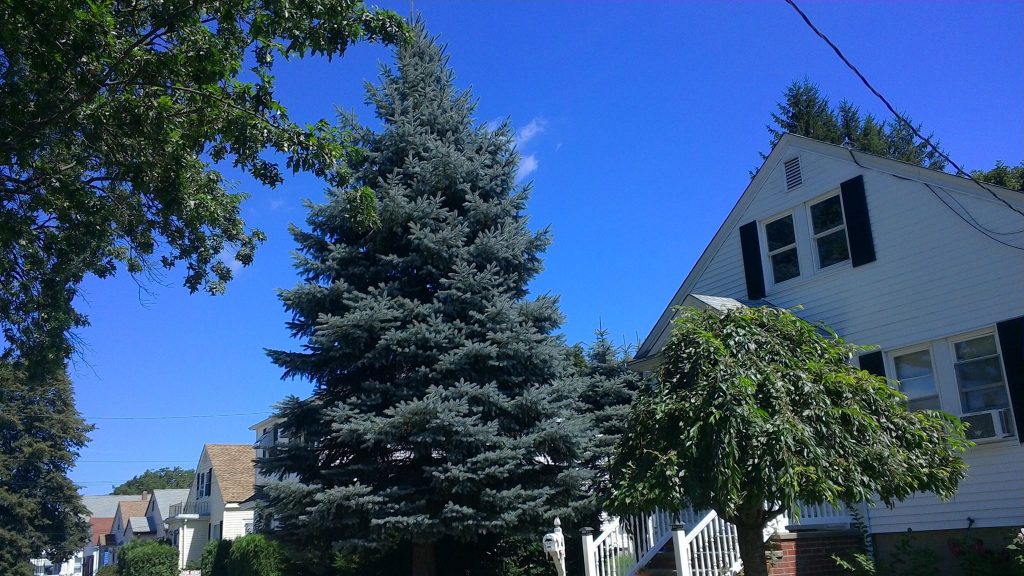
I love telling the story of how Blue started his life with us as a four-foot living Christmas tree in our living room during the 1996 holiday season. We were warned that there was only a 50% chance that Blue would survive the months he spent in our garage where he moved from the house after the New Year, biding his time until we planted him the next April; twenty years later, he is now a perfectly shaped 30-to-35-foot tree whose bottom branches I have to cut off every other year, lest he overwhelm the sidewalk.  Thank goodness I planted him far from any power lines—within a few years some of his upper branches will be touching the upper branches of the oak across the street.
Thank goodness I planted him far from any power lines—within a few years some of his upper branches will be touching the upper branches of the oak across the street.
Chuck joined us a year or so after Blue, a flowering miniature weeping cherry whose name comes from his similarity, as a one-branched twig when I planted him, to Charlie Brown’s iconic and sad-looking Christmas tree. I have to give Chuck, who sports lovely pink flowers in the spring, a significant haircut at least twice per summer—he rejects the “miniature” part of his description and would like to be as tall as Blue. I talk to these trees, as I do to all of my outdoor and indoor plants. As with the Ents, Chuck and Blue seldom say anything. But when they do, it is worth remembering.